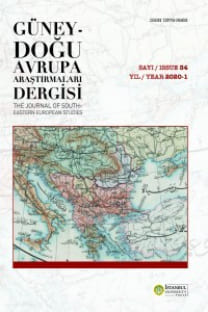MUSLIM PRIMARY EDUCATION lN NORTH DOBRUCA (IN THE 1860S-1870S)
North Dobruca, Muslim primary education, development
___
- Selim Sabit, Rehnüma-yi Muallimin. Sıbyan Mekteplerine Mahsus Usul-i Tedrisiyye, Istanbul Daru'l-Matbaat-i Amire s. a. Salname-i Devlet-i Aliye-i Osmaniye, Defa 2, lstanbul: Daru'l-Matbaat-i Amire 1264 ( 1848/1849). Salname-i Vilayet-i Tuna. Defa 2, 5-9, Rusçuk: Tuna Vilayeti Matbaası 1286 ( 1869), 1289-1293 ( 1872-1877).
- ISSN: 0378-3863
- Başlangıç: 1974
- Yayıncı: İstanbul Üniversitesi
"ŞAHİNLER"İN PENÇESİNDE BİR ERDEL HÜKÜMDARI: KÖPRÜLÜ İKTİDARI VE II. GYÖRGY RAKOCZİ
1781 RUS-AVUSTURYA İTTİFAKI VE GREK PROJESİ
KADIASKER RUZNAMÇE DEFTERLERİNE GÖRE XVII. YÜZYILDA RUMELİ'DE KAZA TEŞKİLATI VE KADILAR
MUSLIM PRIMARY EDUCATION lN NORTH DOBRUCA (IN THE 1860S-1870S)
"ŞAHİNLER"İN PENÇESİNDE BİR ERDEL HÜKÜMDARI: KÖPRÜLÜ İKTİDARI VE II. GYÖRGY RAKOCZİ
